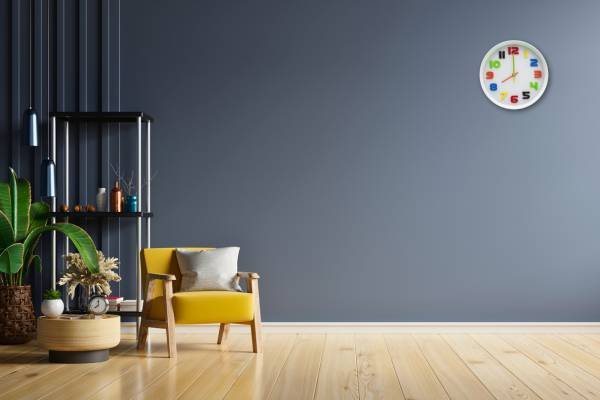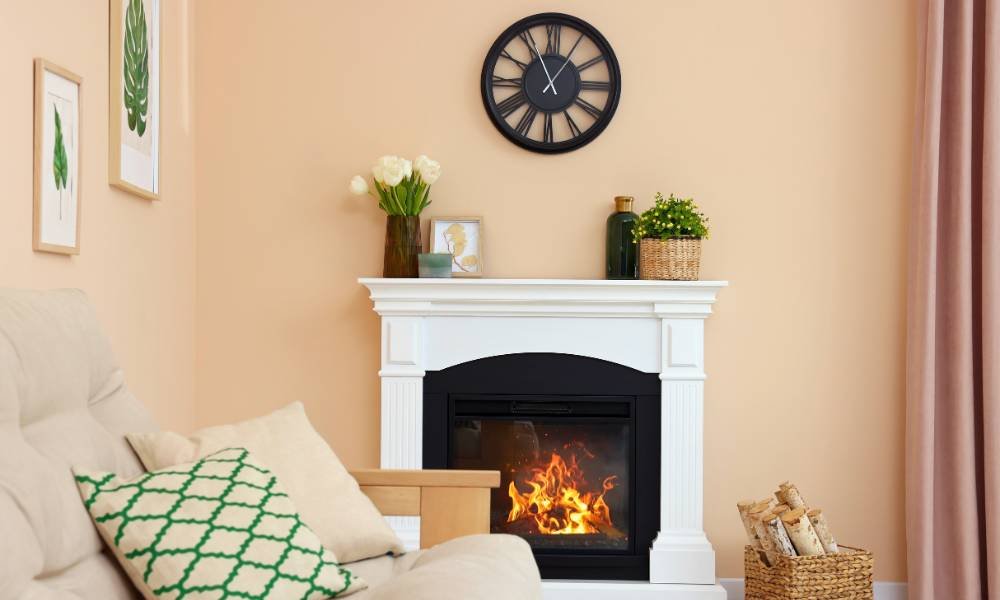Finding the perfect spot for your wall clock in the living room can enhance both functionality and aesthetics. “Where to Put Wall Clock in Living Room?” is a common question for homeowners aiming to optimize their decor. Proper clock placement not only helps keep track of time but also serves as a stylish focal point that complements your interior design. This guide will explore the best locations and techniques for positioning a wall clock in your living room, considering factors such as room layout, focal points, and practical considerations. Whether you’re looking to highlight a fireplace, create a gallery wall, or enhance an accent wall, we have the tips you need.
Step-by-Step Guideline: Where to Put Wall Clock in Living Room
- Assess the layout of the living room: Examine the room layout and identify key areas.
- Identify the focal point: Determine the main visual focus, like a fireplace or TV.
- Choose the Right Height: Hang the clock at eye level, typically 57 to 63 inches from the floor.
- Balance Aesthetics and functionality: Ensure the clock’s size is proportional and readable from various seats.
- Consider Lighting and reflections: Avoid glare by placing the clock away from direct sunlight and bright lights.
Understanding the Living Room Layout
Understanding the living room is essential when deciding where to put a wall clock. Analyzing common living room arrangements, such as open floor plans, sectional seating, and traditional setups, helps identify key areas for potential clock placement. Look for spaces above mantels, near entryways, or on prominent walls that naturally draw attention. Positioning a wall clock in these strategic locations ensures it complements the room’s design while remaining functional and visible. By evaluating the layout and focal points of your living room, you can make an informed decision on the perfect spot for your wall clock, enhancing both the aesthetic appeal and practicality of your space.
Focal Points in the Living Room

Focal points are key areas in a living room that naturally draw the eye, creating a visual anchor for the space. Common focal points include fireplaces, large windows, and feature walls. When deciding where to put the wall clock in the living room, it’s essential to position it in relation to these focal points. Placing the clock above the fireplace or near a prominent piece of artwork can enhance the room’s aesthetic appeal. Ensure the clock complements the focal point without overpowering it. This strategic placement not only highlights the clock but also creates a harmonious and balanced look in your living room.
Considering Height and Proportion
When deciding where to put a wall clock in your living room, height and proportion are crucial factors. Guidelines for optimal clock height suggest placing the clock at eye level, typically around 60 inches from the floor. This ensures easy readability from various seating positions. Balancing the clock size with wall space and furniture is equally important. A larger clock can serve as a statement piece on a spacious wall, while a smaller clock is better suited for more confined areas. Ensure the clock’s size complements nearby furniture, avoiding overcrowding or imbalance. Proper height and proportion create a harmonious and functional living room decor.
Balancing Aesthetics and Functionality
Balancing aesthetics and functionality when deciding where to put the wall clock in the living room is essential. Ensure the clock is both decorative and readable by choosing a spot where it can be easily seen from various seating areas. Integrating the clock with existing decor enhances the room’s overall look. Opt for a design that complements your style, whether it is modern, traditional, or eclectic. Position the clock at an appropriate height, avoiding overly cluttered walls, to maintain a harmonious appearance. By thoughtfully selecting the location, you can create a functional and visually appealing focal point in your living room.
Clock Placement Above the Fireplace
Placing a wall clock above the fireplace mantel can create a striking focal point in your living room. The pros include central visibility and a balanced look, enhancing the room’s overall symmetry. However, the cons involve potential heat exposure from the fireplace, which can affect the clock’s durability. To achieve a harmonious look, ensure the clock is proportionate to the mantel and centered properly. Choose a clock style that complements your living room decor. Additionally, maintaining a neutral backdrop can help the clock stand out without overwhelming the space. Balancing aesthetics and practicality will result in a beautiful and functional addition to your living room.
Using Clocks as Part of a Gallery Wall
Using a wall clock as part of a gallery wall in your living room can create a unique and stylish focal point. Combining clocks with artwork and photos adds variety and depth to your decor. To achieve a cohesive look, select frames and pieces that complement each other in color, style, and size. Start by arranging the largest pieces first, then fill in the gaps with smaller items, including your clock. Balance is key, so ensure the clock’s position enhances the overall composition without overpowering other elements. This approach not only makes the clock functional but also integrates it seamlessly into your living room’s aesthetic.
Placing Clocks on Accent Walls

Placing a wall clock on an accent wall is a strategic way to highlight unique features and add visual interest to your living room. Accent walls naturally draw attention, making them ideal for a stylish clock. When positioned thoughtfully, a clock can enhance the wall’s appeal, creating depth and focus. Choose a clock that complements the color and texture of the accent wall for a cohesive look. Whether your accent wall is painted in a bold color, covered in patterned wallpaper, or features unique textures, a well-placed clock can elevate your living room’s overall design, blending functionality with artistic flair.
Practical Considerations
When deciding where to put the wall clock in the living room, practical considerations are crucial. Avoiding glare and reflections from lighting ensures that the clock is easily readable at any time of day. Position the clock away from direct sunlight or bright lamps to prevent these issues. Additionally, ensure visibility from different seating areas. Place the clock at a height and location where it can be seen from various spots in the room, whether you’re on the couch, at the dining table, or in a reading nook. This thoughtful placement enhances both the functionality and aesthetic appeal of your living room.
Conclusion
In conclusion, knowing where to put a wall clock in the living room can significantly enhance your home’s decor and functionality. By understanding the layout, focal points, and practical considerations, you can choose the perfect spot for your clock. Whether you place it above the fireplace, integrate it into a gallery wall, or highlight an accent wall, the right placement will ensure your wall clock is both a stylish and functional addition. Remember to avoid glare and ensure visibility from all seating areas. With these tips, you’ll confidently decide where to put a wall clock in the living room, creating a harmonious and practical space.
FAQs: Where to Put Wall Clock in Living Room
1. What is the best height to hang a wall clock in the living room?
✅The ideal height is at eye level, typically between 57 and 63 inches from the floor.
2. Can I place a wall clock above the fireplace?
✅Yes, placing a wall clock above the fireplace can create a strong focal point, but ensure it is proportionate to the mantel.
3. How do I avoid glare and reflections on my wall clock?
✅Avoid placing the clock in direct sunlight or under bright lights, and check for reflections from windows or lamps.
4. Should the wall clock match my living room decor?
✅Yes, the wall clock should complement your existing decor in terms of style, color, and size to maintain aesthetic harmony.
5. Can I include a wall clock on a gallery wall?
✅Integrating a wall clock into a gallery wall can add variety and interest, but ensure it remains readable.
